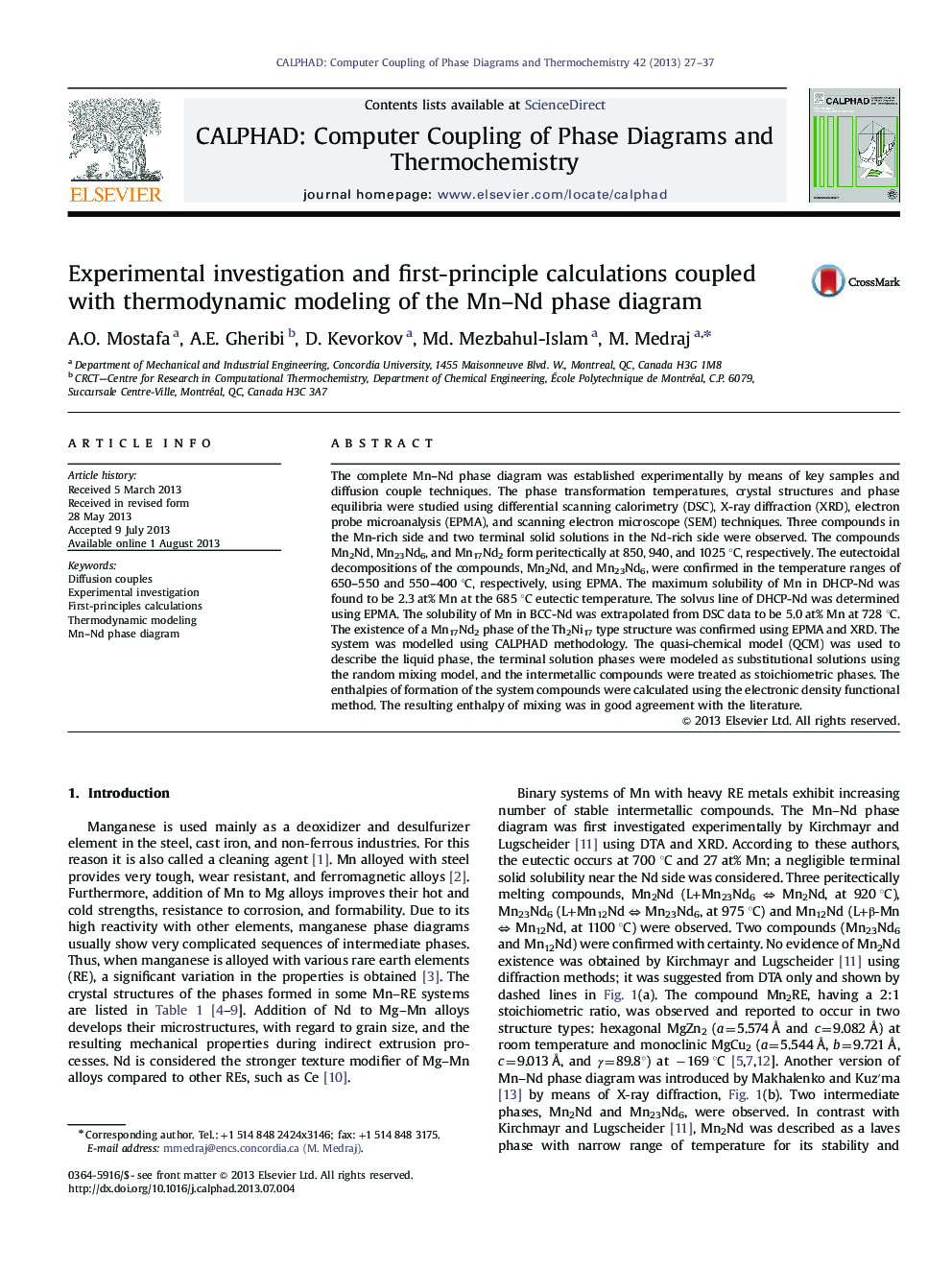| Article ID | Journal | Published Year | Pages | File Type |
|---|---|---|---|---|
| 1558923 | Calphad | 2013 | 11 Pages |
Abstract
The complete Mn-Nd phase diagram was established experimentally by means of key samples and diffusion couple techniques. The phase transformation temperatures, crystal structures and phase equilibria were studied using differential scanning calorimetry (DSC), X-ray diffraction (XRD), electron probe microanalysis (EPMA), and scanning electron microscope (SEM) techniques. Three compounds in the Mn-rich side and two terminal solid solutions in the Nd-rich side were observed. The compounds Mn2Nd, Mn23Nd6, and Mn17Nd2 form peritectically at 850, 940, and 1025 °C, respectively. The eutectoidal decompositions of the compounds, Mn2Nd, and Mn23Nd6, were confirmed in the temperature ranges of 650-550 and 550-400 °C, respectively, using EPMA. The maximum solubility of Mn in DHCP-Nd was found to be 2.3 at% Mn at the 685 °C eutectic temperature. The solvus line of DHCP-Nd was determined using EPMA. The solubility of Mn in BCC-Nd was extrapolated from DSC data to be 5.0 at% Mn at 728 °C. The existence of a Mn17Nd2 phase of the Th2Ni17 type structure was confirmed using EPMA and XRD. The system was modelled using CALPHAD methodology. The quasi-chemical model (QCM) was used to describe the liquid phase, the terminal solution phases were modeled as substitutional solutions using the random mixing model, and the intermetallic compounds were treated as stoichiometric phases. The enthalpies of formation of the system compounds were calculated using the electronic density functional method. The resulting enthalpy of mixing was in good agreement with the literature.
Keywords
Related Topics
Physical Sciences and Engineering
Materials Science
Materials Science (General)
Authors
A.O. Mostafa, A.E. Gheribi, D. Kevorkov, Md. Mezbahul-Islam, M. Medraj,
